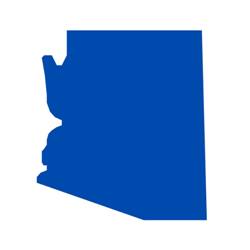How Bright Is the Democratic Future in Arizona?
The party has a non-trivial chance at ending one of the nation’s longest electoral droughts

Arizona Democrats notched their first U.S. Senate delegation sweep since 1952 for the 117th Congress, but freshman Mark Kelly is up for reelection in November in what is expected to be a competitive race against whomever emerges from the crowded GOP field.
Meanwhile, Democratic Secretary of State Katie Hobbs is heavily favored to become her party’s nominee in what should also be a competitive general election.
Should Arizona Democrats win both of those races, it would mark the first time since 1950 in which the party controlled the governorship (Dan Garvey) and both U.S. Senate seats (Carl Hayden and Ernest McFarland) in the state.
Arizona has the seventh longest drought in the nation by this measure.
Democrats in Kansas and Vermont have yet to accomplish this feat – never simultaneously controlling both U.S. Senate seats at any point in state history.
New Hampshire last did so in 1855 when Democrat Nathaniel Baker governed the state and Jared Williams and John Wells legislated in Washington D.C.
Democrats hold both U.S. Senate seats in the Granite State – with Maggie Hassan on the ballot in 2022 – but Republican Governor Chris Sununu remains very popular so this streak is unlikely to be broken this cycle.
Three other states last saw Democrats overlap in each office more than 75 years ago:
- Iowa (1938): Governor Nelson Kraschel and Senators Guy Gillette and Clyde Herring
- Idaho (1946): Governor Arnold Williams and Senators Glen Taylor and Charles Gossett (after Gossett resigned as governor and filled the vacancy caused by the death of Republican John Thomas via ‘self-appointment’)
- Utah (1946): Governor Herbert Maw and Senators Elbert Thomas and Abe Murdock
[Note: Had Arlen Specter not switched parties late in his senatorial career in 2009, Pennsylvania Democrats would last have had a lock on all three seats in 1848].
Democrats currently control both U.S. Senate seats and the governorship in 15 states: California, Colorado, Connecticut, Delaware, Hawaii, Illinois, Michigan, Minnesota, Nevada, New Jersey, New Mexico, New York, Oregon, Rhode Island, and Washington.
The party most recently controlled each of these offices at the same time in Virginia in 2021 and in Maryland, Massachusetts, Montana, and West Virginia in 2014.
Follow Smart Politics on Twitter.

Actually it’s Maggie Hassan on the ballot this year. Jeanne Shaheen was up last cycle.
Using a loose definition of party (affiliation) the Democrats seized control of The Three in VT in late May or early June of 2001 when Senator “Jim” Jeffords left the Republican party at home and the Senate Republican caucus in DC. They would control all three via the ballot box in 2010 upon winning the gubernatorial election that year (a de facto Democrat won a US senate seat in 2006, succeeding Jeffords).
Had the ‘same elected party successor’ provision been in use in the Gem State at the time of Thomas’ death the Democrsts would never have gained control of all Three, thus joining KS Democrats in the longest ‘drought’.
As for the AZ contests – most everywhere else as well – which factor will prove to be bigger, the favorability numbers of the D president, or the continuing lurch away from the mainstream by the Republicans – with many embracing White supremacist and anti-vaccination and -mask movements, and some even praising ‘Vladdie the Baddie’ in his diabolical war westward?